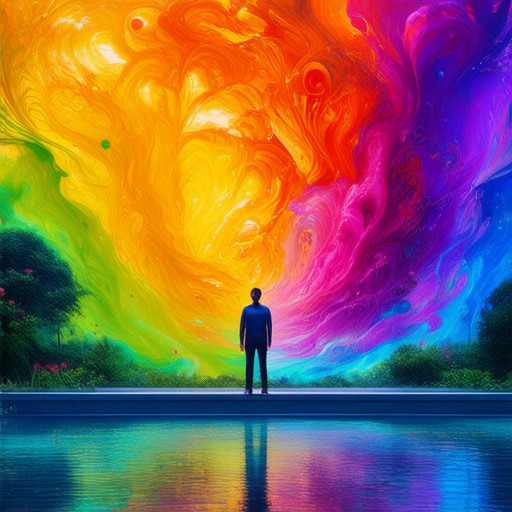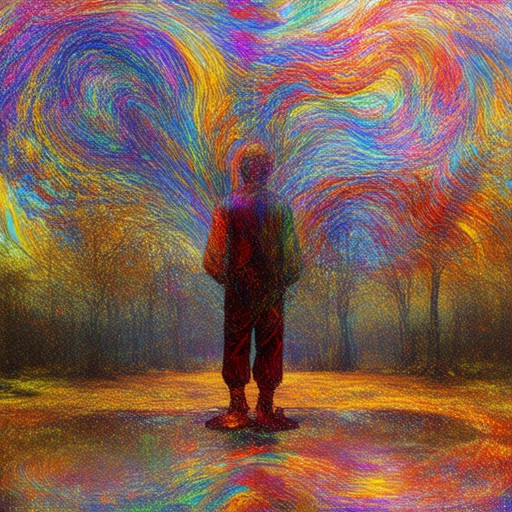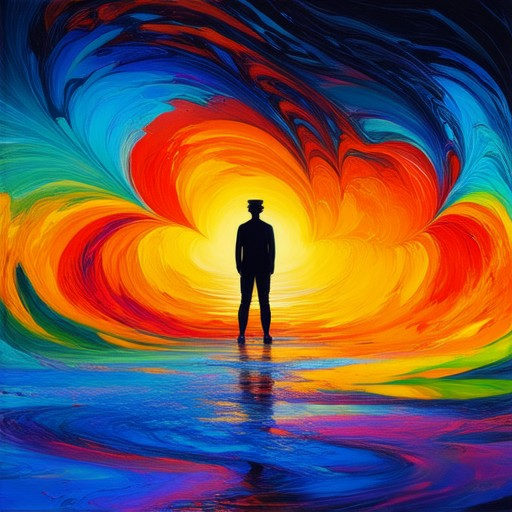Starting your journey into the world of art can feel overwhelming, especially if you’re new to the craft. Whether you’re drawn to traditional mediums like watercolor and acrylic or excited about exploring digital tools and unique forms like latte art and string art, finding the right guidance is key. This comprehensive art tutorial for beginners is designed to walk you through the fundamentals, helping you build confidence and develop your own unique style. From mastering the basics of drawing and painting to discovering the best resources and techniques, this guide offers everything you need to get started and thrive as a creative enthusiast. Dive in and unlock your artistic potential with our ultimate step-by-step approach to art for beginners.

How to Start Drawing for Beginners
Starting to draw can be an exciting journey, but it may seem overwhelming at first. Here’s a step-by-step guide to help you begin:
1. Gather Your Materials
Equip yourself with essential tools:
- Paper – Choose sketch paper or canvas boards for flexibility.
- Pencils – graphite pencils are great for shading and detail.
- Eraser – a stump eraser is ideal for blending and creating soft edges.
- Colored Pencils – for adding color once you’re comfortable with black and white.
- Brightness – use a bright light or a lightbox to aid in shading and perspective.
2. Set Up Your Space
Find a quiet, well-lit area to work. Natural light is beneficial, but a desk lamp with daylight settings can also work well.
3. Learn Basic Techniques
Master the fundamentals:
- Gesture Drawing : Practice quick 2-minute sketches of everyday objects to capture movement and rhythm.
- Grids : Use grid paper to help with proportions and accuracy when drawing shapes and figures.
- Perspective : Experiment with one-point perspective by locating the vanishing point and drawing lines converging toward it.
4. Explore Tutorials and Resources
Find guided resources to enhance your learning:
- Visit Artful Journey for comprehensive guides and tutorials.
- Watch YouTube channels dedicated to drawing basics, such as “Artistic Aspirations” and “Drawing Academy.”
- Refer to books like “The Sketchbook Secret” by Eric Heacock for advanced techniques.
5. Develop a Routine
Consistency is key to improvement:
- Dedicate 30 minutes daily to drawing, even if it’s just a short session.
- Keep a sketchbook to document your progress and ideas.
6. Seek Feedback and Community
Join forums and groups to connect with fellow artists:
- Participate in online art communities like DeviantArt and ArtStation.
- Share your work in local art classes or online groups for constructive criticism.
7. Practice Composition
Learn to arrange elements effectively:
- Use leading lines to guide the viewer’s eye through the composition.
- Experiment with negative space to create dynamic designs.
8. Master Color Theory
Understand how colors interact:
- Study primary, secondary, and tertiary colors.
- Mix colors on paper to explore hues and shades.
9. Set Realistic Goals
Break down your objectives:
- Start with still lifes, then move to portraits and landscapes.
- Seek feedback from peers to refine your skills.
10. Stay Motivated
Keep track of your achievements:
- Maintain a portfolio or journal to visualize your growth.
- Remember why you started drawing and revisit it whenever you feel uninspired.
By following these steps, you’ll build a strong foundation and gradually develop your unique artistic style. Happy drawing!
What is the Easiest Thing to Draw as a Beginner?
Drawing can be a rewarding and accessible skill for anyone, especially beginners. Here are some simple and effective subjects to practice and improve your drawing skills:
- Fruits and Vegetables: Apples, bananas, carrots, and spinach are great subjects due to their symmetry and distinct shapes. They offer a fun and relatable challenge.
- Flowers: A sunflower or a rose are beautiful options. Their vibrant colors and detailed petals make them ideal for practicing shading and texture.
- Simple Landscapes: Sketching a tree, a mountain, or a beach scene can help you capture proportions and perspective. Focus on basic shapes and shadows.
- Animals: Start with easy animals like cats, dogs, or birds. Their features often lend themselves well to simple outlines and expressive details.
- Everyday Objects: Draw a cup, a book, or a chair. These common items allow you to practice observational skills and proportional scaling.
These subjects are chosen because they are visually appealing, require minimal detail, and provide plenty of opportunities to practice foundational drawing techniques. Remember, consistency and patience are key to improving your drawing abilities.

What Are the 5 Basic Skills of Drawing?
The 5 basic skills of drawing are essential for developing your artistic technique and creativity. Mastering these fundamentals will provide a strong foundation for progressing in drawing:
- Observation and Study of Form : This skill involves carefully observing subjects and understanding their shape, texture, and proportions. It requires attention to detail and the ability to analyze forms in three dimensions.
- Technique and Medium : Knowing how to use different drawing tools and materials effectively is crucial. Whether you’re working with pencils, charcoal, or digital tools, mastering the medium will enhance your work’s quality.
- Composition : Effective composition involves arranging elements in a way that creates balance, interest, and harmony. It includes understanding leading lines, focal points, and the use of negative space.
- Practice and Experimentation : Regular practice strengthens muscle memory and improves consistency. Experimenting with different styles and techniques helps you find your unique artistic voice.
- Creativity and Expression : Channeling your imagination and emotions into your artwork makes your pieces truly unique. This skill involves thinking outside the box and bringing your vision to life.
By honing these skills, you can unlock your potential and create stunning artworks. Explore our drawing tutorials and art resources to further enhance your abilities. Don’t forget to check out our art inspiration section for fresh ideas!

Best YouTube Channels to Learn Drawing
Learning to draw effectively requires access to high-quality tutorials and resources. Here are some of the best YouTube channels that cater to different drawing styles and skill levels:
-
Proko
Known for its comprehensive approach, Proko offers detailed tutorials on various drawing techniques, including anatomy, perspective, and life drawing. Their content is ideal for both beginners and advanced artists. Visit Proko’s YouTube Channel
-
Draw with Jazza
Specializing in fun and engaging content, Draw with Jazza focuses on cartooning, character design, and imaginative drawing. Their videos are perfect for those looking to develop a creative workflow. Visit Draw with Jazza’s YouTube Channel
-
Alphonso Dunn
Alphonso Dunn is renowned for his expertise in traditional and classical drawing techniques. His channel provides valuable insights into classical realism, portraiture, and figure drawing. Visit Alphonso Dunn’s YouTube Channel
-
Digital Art Academy
For those interested in digital art, Digital Art Academy offers a wealth of tutorials on software like Photoshop, Procreate, and Krita. They cover everything from basic techniques to advanced digital painting methods. Visit Digital Art Academy’s YouTube Channel
-
Artistic Aspirations
Artistic Aspirations focuses on helping artists improve their skills through structured lessons and challenges. Their content spans various mediums, including oil painting, watercolor, and mixed media. Visit Artistic Aspirations’ YouTube Channel
Most Popular Art Channel on YouTube
The most popular art channel on YouTube is Artful Journey . Known for its high-quality content, Artful Journey offers a wide range of art-related videos, including tutorials, artist interviews, and in-depth explorations of various art forms. With a strong emphasis on creativity and inspiration, the channel has built a loyal following among artists and art enthusiasts worldwide.
Other notable art channels include:
- Creativebug : Specializing in crafts and DIY projects, Creativebug provides a vast library of instructional videos for those looking to develop their artistic skills.
- The Art Sherpa : Focused on drawing and sketching, The Art Sherpa offers detailed tutorials and resources for both newcomers and experienced artists.
- The Slanted Lens : While primarily focused on fine art and photography, The Slanted Lens has gained a significant following for its unique perspective on artistic expression.
Artful Journey stands out due to its comprehensive approach and ability to engage viewers with thought-provoking content, making it a top choice for art lovers seeking inspiration and learning.

Best Drawing Course for Beginners
Welcome to Artful Journey, your go-to destination for mastering drawing skills. Whether you’re a complete novice or looking to refine your technique, we’ve curated a selection of the best drawing courses tailored for beginners. These programs are designed to be accessible, engaging, and effective for anyone eager to explore their creative side.
Top Picks for Beginner-Friendly Drawing Courses
- Coursera: Introduction to Drawing Coursera offers a comprehensive introduction to drawing, perfect for those new to the medium. This course covers fundamental techniques, shading, and composition, with interactive lessons and expert feedback. Explore Coursera’s offerings
- Udemy: Basic Drawing Techniques Udemy’s Basic Drawing Techniques course is ideal for beginners. It includes step-by-step tutorials, video demonstrations, and downloadable resources to help you get started. Discover Udemy’s courses
- Artful Journey: Creative Basics Our very own Creative Basics course is designed specifically for newcomers. It breaks down drawing fundamentals, provides creative exercises, and encourages personal expression through art. Join Artful Journey
- Skillshare: Drawing Fundamentals Skillshare’s Drawing Fundamentals course is a great choice for those seeking structured learning. It features unlimited access to video lessons and project-based activities. Explore Skillshare
Features to Look For in a Beginner Drawing Course
When selecting a drawing course for beginners, consider the following features:
- Structured Curriculum: A clear progression from basic concepts to advanced techniques ensures steady improvement.
- Interactive Learning: Look for courses with videos, quizzes, and downloadable materials to enhance the learning experience.
- Community Support: Courses with forums or group projects often provide valuable feedback and motivation.
- Practical Projects: Opportunities to apply what you learn in real-world projects can significantly boost confidence and skill levels.
Why Choose Artful Journey?
At Artful Journey, we believe everyone has the potential to unlock their creative potential. Our courses are crafted to be both challenging and supportive, guiding you from your first strokes to confident creations. Join us today and embark on your artistic journey!
Conclusion
Whether you prefer self-paced learning or structured classes, there’s a drawing course for every beginner. By choosing a program that aligns with your learning style and goals, you’ll be well on your way to developing a strong foundation in drawing. Happy creating!




0 Comments